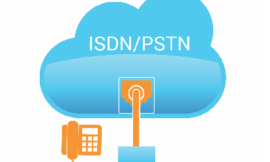Have you ever faced a network issue that seemed like a giant maze with no exit?
You’re not alone.
Many aspiring network engineers find troubleshooting to be one of the toughest aspects of their job.
But don’t worry.
This blog will provide you with all the information you need about the dos and don’ts of troubleshooting so that you can troubleshoot networking issues with confidence.

I. The Importance of Troubleshooting in Network Engineering:
Troubleshooting is the heartbeat of network engineering.
It’s about quickly and efficiently diagnosing and resolving issues that can impact business operations.
This skill not only keeps the network healthy but also safeguards the reputation of the business, ensuring that services run smoothly and reliably.
II. Dos of Troubleshooting:
- Do Understand the Problem: Before you leap into action, take a step back and fully understand the issue. Use tools and techniques like network diagrams or logs to get a clear picture of the problem.
- Do Follow a Systematic Approach: Tackling problems methodically can save you time and effort. Develop a step-by-step strategy to address issues, which can help avoid missing critical elements.
- Do Document Everything: Keep track of your troubleshooting steps and solutions. This not only helps in post-analysis but also aids in creating a knowledge base for future reference.
- Do Utilize the Right Tools: Familiarize yourself with network troubleshooting tools. Knowing when and how to use these tools can make a significant difference in solving problems.
- Do Communicate Effectively: Clear communication with your team and stakeholders is important. Keep everyone informed about the issue, the expected resolution time, and the impact on business operations.
III. Don’ts of Troubleshooting:
- Don’t Jump to Conclusions: Avoid assumptions that can lead you astray. Ensure your conclusions are based on solid data and thorough analysis.
- Don’t Ignore the Basics: Sometimes, the solution is simpler than it appears. Always check the foundational elements before exploring more complex issues.
- Don’t Overlook Security Implications: Always consider the security aspect of your troubleshooting actions to avoid introducing vulnerabilities.
- Don’t Forget to Escalate When Necessary: Recognize when a problem is beyond your scope and escalate it to the appropriate expert or team.
- Don’t Neglect Post-Troubleshooting Analysis: After resolving an issue, review the process to identify what was done well and what could be improved.
IV. Best Practices in Network Troubleshooting:
Combine the dos and don’ts into a cohesive strategy that enhances your troubleshooting effectiveness. Embrace continuous learning to stay ahead of the curve in network technologies and troubleshooting methodologies.
Final Words:
Troubleshooting is an essential skill for any network engineer.
By following these dos and don’ts, you can approach network issues with more confidence and efficiency.
Remember, every troubleshooting experience is a learning opportunity that brings you one step closer to becoming an expert network engineer.
If you want to become a certified CCIE professional and lead a fulfilling networking career, enroll in our CISCO certifications today.
Happy Reading 🙂




